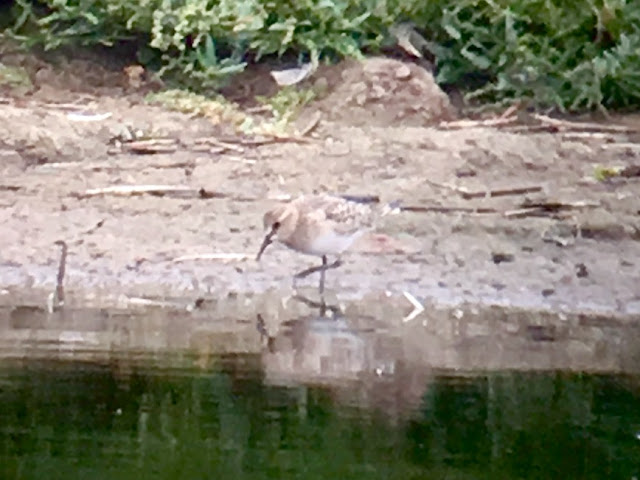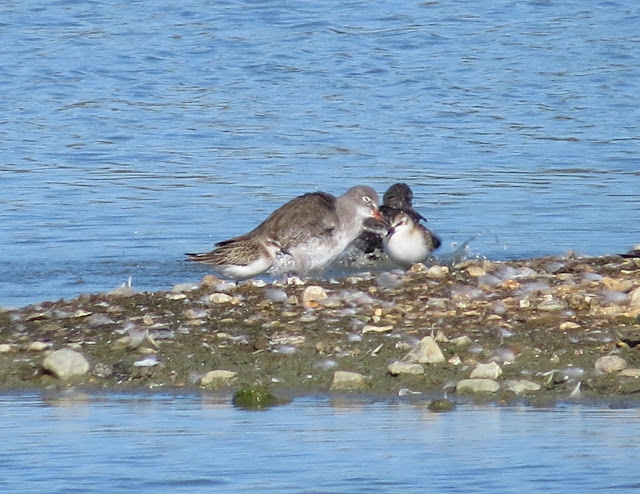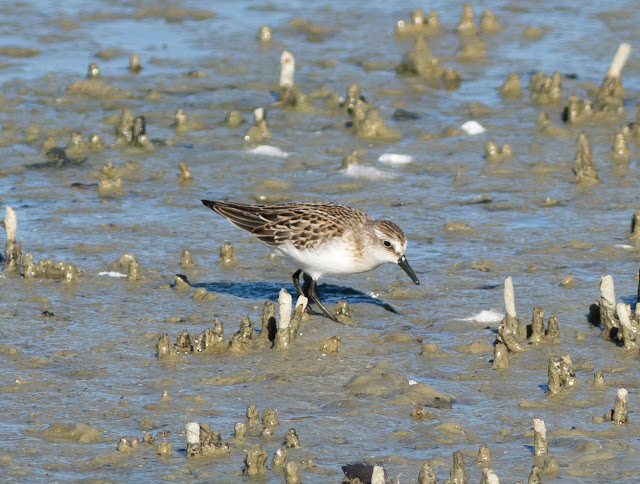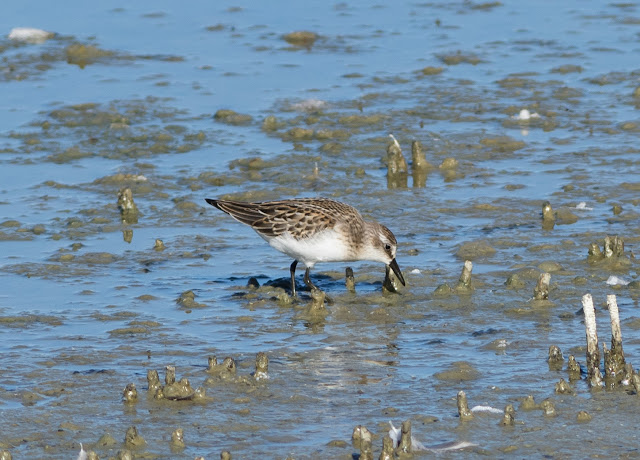Having almost completed the
extensive collection of sandpipers on the British list with just 4 remaining
(Least, Upland, Baird’s and Semipalmated) it was a nice surprise when a
juvenile Baird’s Sandpiper turned up at Upton Warren in Worcestershire, just over an hour
down the road.
With the bird still present the
next morning, we made the trip down the M6 in an effort to see this attractive
sandpiper, and duly paying our £3 permit fee, headed over to the furthest hide
on the reserve where the Baird’s had been showing.
With a juvenile Ruff also present
for company, we soon locked on to the much smaller Baird’s, busily feeding on the
far edge of the flash in the mud and working its way around the pool. Despite the
distance making any decent photographs impossible, the views through the scope
were excellent - the beautiful patterns on the back standing out even at range
and the distinctive elongated profile created by the long primary projection clearly
defined.
 |
| Terrible phonescoped record shots of the Baird's! |
With a Semipalmated Sandpiper
at Titchfield Haven also being retrospectively ID’d from photographs on
Saturday evening (it was originally thought to be a Little Stint by on site
observers), this provided the perfect opportunity to make it a double sandpiper
weekend. Semi-ps have been a particular nemesis bird of mine for a while now,
having previously dipped 2 in the past while a third bird at Hoylake could
never be narrowed down from either a Semipalmated or Western Sandpiper.
Despite being over 3 hours
away, the fact that the Semi-p was showing particularly well and still present
the next morning saw us head down to Hampshire in the glorious sunshine in
search of my second American sandpiper of the weekend.
Arriving at the hide and with
the Semi-p instantly on show on a distant muddy bank, it took all of 5 seconds
of viewing before the whole scrape was flushed! Potential nightmare! Luckily,
the Semi-p and associating Little Stint didn’t go far, instead flying closer on
to one of the smaller islands and providing the perfect opportunity to study
the subtle differences between these two exceptionally similar species.
 |
| Semipalmated Sandpiper showing well! |
 |
| Spot the difference! The Semi-p is on the left while the Little Stint is on the right |
Often hard to distinguish from
the similar Western Sandpipers in America (such as the tricky Hoylake peep
several years agao) the lack of any fiery tones in the upper scapulars as shown
on Westerns and the shorter, straighter bill all aided in confirming the
identification of what I consider to be quite a hard species to ID.
Luckily, the Semi-p flew right
in front of the hide before we left, offering amazing views and emphasising the
point that it is far more satisfactory to travel a longer distance for a bird
that shows well than to get poor views of a bird that perhaps isn’t as far.
Alex's super video of the Semi-p - a big thanks to him for making the epic drive too



No comments:
Post a Comment